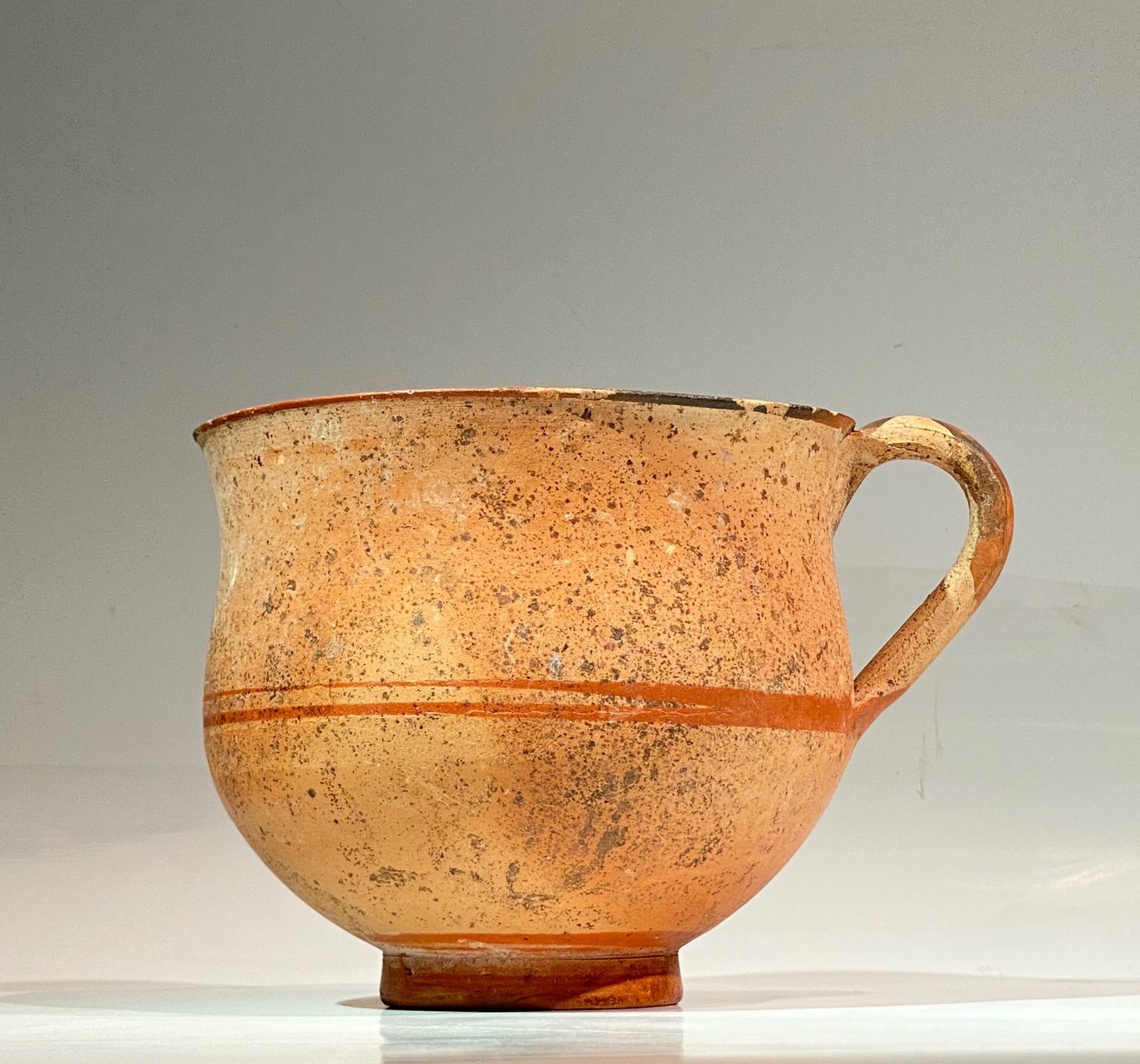



Terracotta
Native Apulian, South Italy, 5th/4th century BC
H. 8.6 cm; Ø 10 cm
This cup, as the other three (CL1584, -85,-86), is very thin walled. The forms of them, in my opinion, are amazingly beautiful.
The Daunians, an Illyrian tribe, populated Apulia during the 11th century BC and mixed with local inhabitants and Aegean groups forming the Lapygian civilization that consisted of three tribes. The Messapians, the Peucetians and the Daunians. All three tribes developed a remarkable local pottery style and production. The Daunian pottery has its own characteristic style and is beautiful in its forms and simplicity.
Condition: Excellent
Provenance: The estate-collection of a Swiss gentleman, Ticino, before 1970
Ancient Daunian ceramic refers to a distinctive type of pottery produced by the Daunian culture, which existed in southeastern Italy during the Iron Age (9th-4th centuries BCE). Daunian pottery is characterized by its unique shapes and decorative motifs, which include geometric patterns, plant and animal motifs, and human figures. The pottery is typically made from a coarse clay, and it is decorated with black or dark brown slip, a type of liquid clay that is applied to the surface of the pottery before firing.
The Daunians were an ancient Italic people who inhabited the region of Apulia, located in the southeastern part of the Italian peninsula. The Daunian culture was characterized by a complex society with a hierarchical structure, and they were known for their art, particularly their pottery.They were one of several ancient peoples who inhabited Italy during the Iron Age, including the Etruscans, the Greeks, and the Samnites. They were eventually conquered by the Romans in the 3rd century BCE. Daunian pottery is highly prized by collectors and scholars of ancient art, and it provides valuable insights into the artistic and cultural achievements of the ancient Daunian people.
Item reference: CL1587
